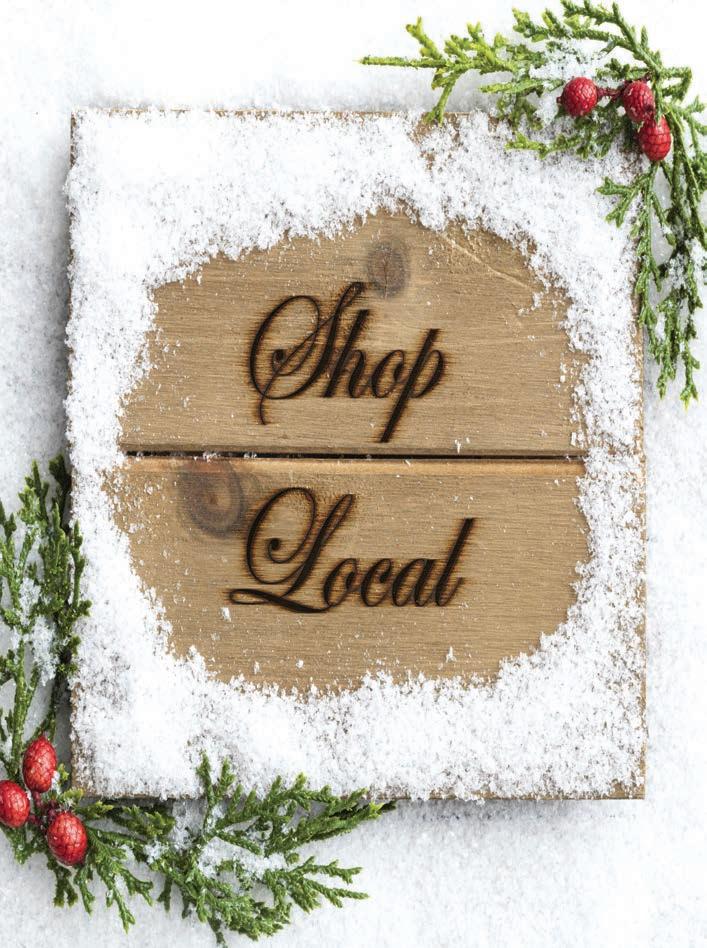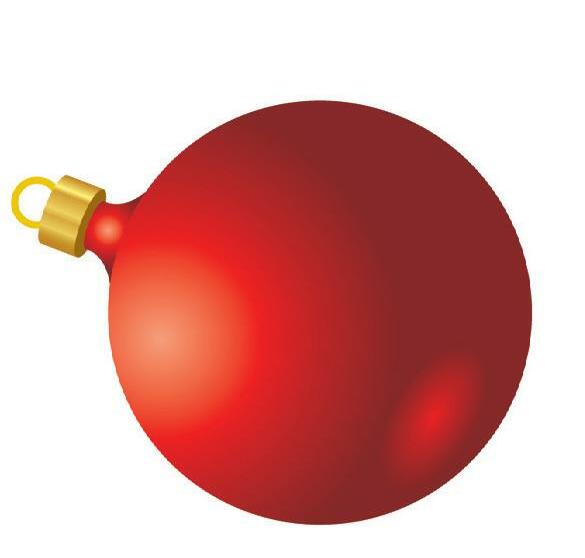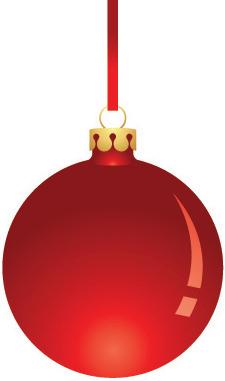




























































































































































































The holiday season is a special time of year. Many factors combine to make the holiday season so unique and festive, and that includes all the effort people put into decorating their homes.

Much thought is giving to holiday lighting arrangements and which tree to buy, but it’s equally important to consider pets when decorating. Many common household pets are naturally curious, and that curiosity can make it difficult to decorate safely come the holiday season. But various pet-proofing strategies can ensure holiday decorations and displays aren’t compromised by fourlegged friends this season.

Much like other residents of the home, pets may be mesmerized by a glowing Christmas tree. Pets may sniff around the tree or investigate it closely, which can increase the chances that it tips over. That poses a significant safety hazard and underscores the importance of using a sturdy stand. Fastening the tree to a wall, much like one might do with a television that isn’t mounted, adds a further layer of protection from tipovers.
Live trees need water to stay green and keep their needles throughout the season. That water could prove enticing to thirsty pets. Drinking water from a tree stand could increase the risk of the tree tipping over and the water could upset the stomach of pets if the tree was treated with pesticides prior to being brought home. When decorating with a live tree, make sure the base of the tree where the water will be is blocked off.
A small fence around the tree could keep curious pets away. The room where the tree is located should be locked or inaccessible when pets are home alone.
Wires can become frayed over time, and that could pique pets’ curiosity. Lighting wires should always be inspected prior to decorating and frayed or damaged wires should be thrown away, even if it means replacing lights. If wires are still sturdy, conceal them along the base of the wall using a cable concealer, which prevents pets from chewing on them.
Candles should not be lit in homes with pets. Even candles on shelves that are seemingly beyond pets’ reach can be hazardous, as pets, especially cats, have a way of accessing spaces they seemingly shouldn’t be able to reach. Use electric candles in lieu of traditional ones.
Pet owners can speak with their veterinarians before bringing poinsettias, holly and other seasonal plants and flowers into their homes. Some pets could suffer allergic reactions if they eat certain seasonal plants, so it’s best to err on the side of caution and speak to a vet before including live plants and flowers in decorative displays.
Decorating is part of the holiday season. Pet owners must exercise an extra bit of caution to keep their pets and homes safe when decorating during this special time of year.








The winter solstice occurs each year during the month of December in the northern hemisphere. In 2022, the winter solstice will take place on December 21 at 4:48 p.m. EST.
Solstices are significant events that occur twice per year. One occurs in the winter and one in the summer. The winter solstice also is known as the first day of winter and occurs when the Earth’s pole reaches its maximum tilt away from the sun. During the winter solstice, people will experience the shortest period of daylight and the longest period of nighttime of the year. Here are 14 fascinating facts about the winter solstice.
1. Depending on the hemisphere, the north or south pole will experience continuous darkness or twilight around its winter solstice.

















2. The winter solstice sometimes is referred to by the term midwinter.

3. Even though the solstice is marked by a whole day on the calendar, it actually is just the brief moment of time when the sun is exactly over the Tropic of Capricorn.
4. The word “solstice” can be translated from Latin and means “sun stand still.”
5. The Tropic of Capricorn is located at 23.5 degrees south of the equator.


6. Tourists flock to Stonehenge to track the movement of the sun. The stones will frame the sunset on the winter solstice and the sunrise on the
summer solstice.
7. Ancient cultures viewed the winter solstice as a time of death and rebirth.
8. Important events in history have taken place on winter solstices. The Apollo 8 spacecraft launched on the solstice in 1968. Pilgrims also arrived at Plymouth on the winter solstice in 1620.
9. Each planet in the Earth’s solar system has its own solstices and equinoxes.
10. The southern hemisphere experiences the winter solstice in June each year.
11. A full moon on a solstice is even more rare than a blue moon. The last full moon to occur on the winter solstice was in 2010 and the next one won’t happen until 2094.
12. Earth is closer to the sun around the winter solstice in December. However, the northern hemisphere receives less sunlight and has cooler temperatures because it is tilted away from the sun during winter.
13. Even though the winter solstice features the shortest amount of daylight of any day during the year, it does not have the earliest sunset. That takes place roughly two weeks prior. In 2021 in New York, the winter solstice took place on December 21, but the earliest sunset occurred on December 7 at 4:28 p.m.
14. Meteorological winter begins on December 1 rather than December 21






































































































Sparkling wines are made by sealing the beverages before the fermentation process is complete, causing the effervescent bubbles that is their hallmark. Sparkling wines are produced in various regions of the world, but “champagne” is unique to the Champagne region of northeast France, where vines were introduced by the Romans many centuries ago.
One of the most legendary and heralded brands of champagne was created by a French monk named Pérignon. Historians say Pérignon lived from 1638 to 1715 and was admitted in his lifetime to the abbey of Saint-Vanne. He acquired the honorary title of Dom while there, and also served as cellar master, creating what later would be known as the “vins de Pérignon.”

Dom Pérignon champagne is still a prestigious brand today, joined by other leaders of the industry like Moët & Chandon, Veuve Clicquot, Nicolas Feuilatte, and Pol Roger. French champagnes are part of ele-
gant toasts, A-list events and five-star dining experiences. They also may be poured on New Year’s Eve. All champagne is sparkling wine, but not all sparkling wine is champagne.


Enjoying champagne on its own in the requisite stemmed glass is tradition, but champagne also can be mixed into any number of cocktails — from bellinis to mimosas. This “Blood-Orange Champagne Cocktail” is a variation on the classic mimosa, and doesn’t necessarily need to be enjoyed at brunch. Serve it on New Year’s Eve, or for any special occasion, courtesy of Martha Stewart. BLOOD-ORANGE CHAMPAGNE COCKTAIL






















Roasts are customary during the holiday season because they often feed a crowd and look impressive on serving platters. Some people opt for a roast beef while others prefer to roast a turkey. However, chicken just as easily can be turned into a holiday dinner since it is versatile and tasty. In addition, the cooking time for a roasted chicken is much shorter than it is with other roasted dishes.

This recipe for “Roast Chicken with Whole Roasted Garlic” from “Rachael Ray 50: Memories and Meals from a Sweet and Savory Life” (Ballantine Books) by Rachael Ray provides the basis for a tasty holiday meal. Simply multiply the recipe as needed depending on the number of guests.




Serves 4
• 1 4-pound chicken
• Kosher salt
• 2 lemons, one pierced several times with the tines of a fork and one halved
• Few sprigs each of thyme and rosemary


• 4 large bulbs garlic, 1 per person or portion, ends cut to expose the cloves (keep the hairy
root end intact)
• EVOO (extra-virgin olive oil) for drizzling
• Freshly ground black pepper
• 3 tablespoons butter

• 1 cup white wine
• Warm, crusty bread
Place the chicken in a shallow baking dish. Salt the chicken inside and out and place uncovered in the fridge overnight.
Preheat the oven to 450 F. Pat the chicken dry and fill with the pierced whole lemon, thyme and rosemary. Tie the legs up. Dress the bulbs of garlic with EVOO; season with salt and pepper. Arrange the garlic in the baking dish around the chicken. Rub the skin of the chicken with butter and season with pepper. Pour the wine into the bottom of the dish.
Roast the chicken for 1 hour or until an instant-read thermometer inserted into the thickest part of the dark meat reads 165 F. Let the chicken stand for a few minutes on a carving board until just cool enough to handle. Carve the chicken, dividing the white and dark parts and slicing the breast meat on the bias. Arrange the chicken on plates or a platter and top with drippings, juices and the juice from the remaining halved
Specializing in fashion, beauty, and home décor trends.

Blushing Beauty Boutique
carries sizes small through 3X in tops, dresses, bottoms, and more!
We also carry Strap-its, the most comfortable and fashionable all-inclusive bra with sizes 32A to 42DD!
Blushing Beauty Boutique, where you meet as strangers and leave as friends!











































Entertaining is a big part of the holiday season. Calendars are packed this time of year with gatherings with friends, family and professional colleagues.



Entertaining requires keeping plenty of refreshments on hand to ensure guests maintain their holiday spirit. Dessert is no stranger to the season, with office break rooms, dining tables and buffet stations brimming with sweet treats to tempt celebrants’ palates. Everyone should have a go-to dessert to bring along to a holiday party or to offer guests when hosting their own fêtes. Cookies are a standard due to their versatility and portability.
Festive “Sour Cream Cookies” provide all of the holiday feels and can be customized in color to reflect celebrations of Christmas, Chanukah, Kwanzaa, or New Year’s. Bake up a batch, courtesy of “Live Well Bake Cookies” (Rock Point) by Danielle Rye.
Makes 22 cookies
• 1 1 2 cups all-purpose flour, spooned and leveled

• 1 teaspoon baking powder
• 1 4 teaspoon salt
• 1 2 cup (1 stick) unsalted butter, softened
• 3 4 cup granulated sugar
• 1 large egg, at room temperature



• 1 1 2 teaspoons pure vanilla extract
• 1 2 cup sour cream, at room temperature





FROSTING
• 1 2 cup (1 stick) unsalted butter, softened
• 11 2 cups powdered sugar
• 1 tablespoon heavy whipping cream or milk
• 1 teaspoon pure vanilla extract Gel food coloring (optional)
1. To make the cookies: Preheat the oven to 350 F. Line two large bak-
ing sheets with parchment paper or silicone baking mats and set aside.
2. In a large mixing bowl, whisk together the flour, baking powder and salt until well combined. Set aside.
3. In the bowl of a stand mixer fitted with the paddle attachment or in a large mixing bowl using a handheld mixer, beat the butter and granulated sugar together for 1 to 2 minutes, or until well combined.

4. Mix in the egg and vanilla extract until fully combined, making sure to stop and scrape down the sides of the bowl as needed.
5. Mix in the dry ingredients in two additions, alternating with the sour cream. Make sure to mix in each addition until just combined, and be careful not to overmix the batter.
6. Using a 11⁄2-tablespoon cookie scoop, scoop the cookie dough onto the prepared baking sheets, making sure to leave a little room between each one.
7. Bake for 14 to 16 minutes, or until the tops of the cookies are set and spring back when touched lightly. Remove from the oven, and allow to cool on the baking sheets for 10 minutes, then carefully transfer the cookies to a wire rack to cool completely.
8. To make the vanilla buttercream frosting: In the bowl of a stand mixer fitted with the whisk attachment or in a large mixing bowl using a handheld mixer, beat the butter for 1 to 2 minutes, or until smooth. Add the powdered sugar, 1 2 cup at a time, mixing in each addition until well combined.
9. Add the heavy whipping cream, vanilla extract, and gel food coloring (if using), and continue mixing until fully combined.
10. Once the cookies have cooled completely, spread the frosting on top of the cookies.

11. Store the cookies in an airtight container at room temperature or in the refrigerator for up to 4 days.


































































































Decorations and shopping draw much of the attention come the holiday season, and rightfully so. But many people’s fondest holiday memories occurred around the dinner table during meals with friends and family.






Holiday foods tend to be rich, flavorful and time-consuming to prepare. However, all the effort is usually worth the satisfied smiles on the faces of loved ones.

Planning holiday meals is challenging, and hosts often doubt if they have enough food for everyone. No one wants guests to leave feeling hungry, nor do they want to have tons of leftovers, much of which will inevitably end up in the trash. Determining how much food to serve involves figuring out a few key items, including the mix of guests (ratio of children, men and women), the length of the occasion, the timing of the event, and the type of meal one plans to serve. For example, if the holiday gathering is an after-dinner cocktail party, hosts can get away with offering very little food. However, hosts of holiday dinners have a lot more food to prepare.

To get started, consider these general guidelines, courtesy of Allrecipes.com and The Spruce, a home living resource.


Popular foods tend to go more quickly than other items, so serve more than the general portion guidelines suggest. Shellfish appetizers, roasted or mashed potatoes, wings, and slices of rich meat are examples of popular fare.

But because guests will likely want to try all the offerings, expect the average person to consume more food per individual when several foods are offered.
MOST
In fact, appetizers (for a hungry crowd) may be consumed in greater abundance than subsequent courses.
AVERAGE PORTION SIZES FOR EACH GUEST
Include: 3 ounces of dips; 3 ounces of salad; 6 ounces of meat or main entrée; 5 ounces of starch; and 11⁄2 pieces of dessert. These estimates can be used to calculate how much food will be needed.
THINK ABOUT ADDING “SAFETY” ITEMS TO THE MENU THAT CAN BE PULLED OUT IN A PINCH AND DON’T REQUIRE MUCH PREP WORK
These can include cheese and crackers, extra bread, nuts, olives, or pretzels.
Hosts who are overly concerned that guests may go overboard can tame portion sizes by hiring servers who can oversee buffet lines. Otherwise, serve guests plated meals directly from the kitchen, from which hosts can dole out the right amount of food to ensure everyone gets enough to eat.





























































































































































































































Decorating the interior and exterior of a home is a beloved holiday season tradition in millions of households. Such decor makes it easy to dive into the festive nature of the season.
Many people could not imagine a holiday season without decorating their homes, and it’s vital that celebrants do so safely. Fire safety is especially important during a time of year when string lights and potentially dried out trees feature so prominently. These fire safety tips can ensure this holiday season is safe.




It might be tempting to buy the most inexpensive lights, especially given all the extra costs already associated with the holiday season. However, safety should be the utmost priority when buying new lights. Testing laboratories such as CSA, Intertek and UL certify products to ensure they’re safe for use. Products that aren’t certified should be avoided.




The packaging on lights will indicate if the product is intended to be used indoors or outdoors. It’s vital that individuals decorating their

homes with lights pay attention to these labels. Never decorate the exterior of a home with interior lights, and vice versa. Extension cords made for indoors also should not be used outdoors and vice versa.


Candles should only be burned when adults are in the room and should always be extinguished before leaving the room or going to bed. When burning candles, place them on heat-resistant surfaces that are beyond the reach of curious kids and pets. Never place candles within arm’s length of Christmas trees or houseplants, including poinsettias.

Ground fault circuit interruptor (GFCI) outlets are designed to prevent electric shocks and reduce the risk of electrical fires. Most areas now require new homes be built exclusively with GFCIs, which are recognizable because they feature two buttons between the outlets. But older homes may not be equipped with GFCIs, particularly with exterior outlets. GFCI installation is not an especially expensive job, so home-
owners should ask an electrician to inspect their interior and exterior outlets and replace non-GFCIs with GFCIs.
Stringing lights can be a hassle, but cords should never be pinched in doors or windows or beneath interior and exterior furniture. Doing so increases the risk of damage to the cord, which in turn increases the likelihood of fire.

Overloaded circuits pose a significant fire hazard. When plugging in lights, choose outlets that aren’t already occupied by devices and other electronics. If need be, unplug appliances like televisions and devices while lights are on and plugged in.
When decorating this holiday season, celebrants are urged to do everything they can to reduce the risk of fire in their homes.



The holiday season is a special time of year. Individuals often spend a little more on gifts, indulge a little more on rich foods and treats and make a concerted effort to enjoy more time with their loved ones during the holidays.















The tendency to overdo things during the holiday season can create a lot of waste. In fact, Americans produce 25 percent more garbage from Thanksgiving through the end of the year, according to Waste Advantage magazine, a publication of the waste and recycling industry. That uptick equates to one million tons of extra trash per week throughout the holi-





days.


Extra food, plastic and paper waste is generated this time of year, but people can be mindful of the potential to go overboard and take some steps to be more waste-conscious as they entertain.




It’s certainly easy to use disposable plates, napkins and cups when hosting holiday parties, but that is very wasteful. Opt for durable, reusable products that can be packed away and used each year during holiday events.




Sunday comics, newsprint, colorful magazine pages, and even pieces of fabric can be used to wrap gifts in lieu of purchasing new wrapping paper. Otherwise, collect used wrapping paper and reuse it next year, doing the same with boxes and bows. According to researchers at Stanford University, if every American family wrapped just three presents in reused materials, it would save enough paper to cover 45,000 football fields.
Avoid fad gifts and focus on items that will have staying power. Homemade gifts, such as foods, knitted scarves, artwork, and more, are generally ecofriendly.
Remind party guests to recycle the appropriate materials by clearly marking a pail designed for collecting recyclables, such as cans, plastic beverage bottles and glass wine bottles. Most hard plastics can be recycled.
Call companies and ask to be taken off promotional mailing lists to reduce paper waste.
Mail holiday card recipients photos of the kids or the entire family in lieu of cards. They’re apt to save the photos and display them, helping to keep even more paper trash out of landfills.


With an abundance of food remaining after entertaining, turn leftovers into new meals by exploring recipes from friends or by doing a little research online.
Waste can get out of control during the holidays, but there are ways to tame the excess.




























































Cocktail parties feature prominently on social schedules each holiday season. Such get-togethers are convenient because the foods and beverages served are designed to be small and portable. That can save any holiday host time in the kitchen.


There may be plenty of prepared foods in the grocer’s freezer that can be served for gatherings, but the taste of easy, homemade offerings can mingle with the time-savers when guests arrive. “Bacon-Wrapped Goat Cheese Stuffed Dates” are an easily

prepared appetizer that pairs sweet with savory. Even better, these morsels are delicious served warm out of the oven or can be eaten at room temperature when late-arriving guests stroll in.
Wrap up cocktail party spreads

with this recipe, courtesy of “Spectacular Spreads: 50 Amazing Food Spreads for Any Occasion” (Rock Point) by Meagan Brown.




Makes 16
• 16 pitted dates





• 8 thin slices bacon, halved

• 4 ounces creamy goat cheese
Hot honey, for garnishing Chopped fresh parsley, for garnishing
Preheat the oven to 350 F. Lightly grease a rimmed baking sheet with nonstick cooking spray. Set aside.
If your dates are not already pitted, slice the dates lengthwise on one side, but not all the way through, to create an opening. Remove the pit.
Using a teaspoon measure, fill the cavity of each date with a heaping teaspoon of the goat cheese and then gently press the sides together to close a bit.
Wrap each date with a half slice of bacon and secure with a toothpick. Arrange the bacon-wrapped dates on the prepared baking sheet.
Bake for 15 to 20 minutes, turning the dates halfway through so the bacon is evenly cooked. Transfer the bacon-wrapped dates to a serving platter and drizzle with the hot honey. Garnish with the parsley. Serve warm or at room temperature.







































































Your Ocean City vacation home will be earning more while standing out with Vacasa’s full-service vacation home management.









Local guest support in your area, and a convenient homeowner app
Premium home care with regular inspections and professional cleanings
Sophisticated digital marketing and pricing tech to get bookings




























